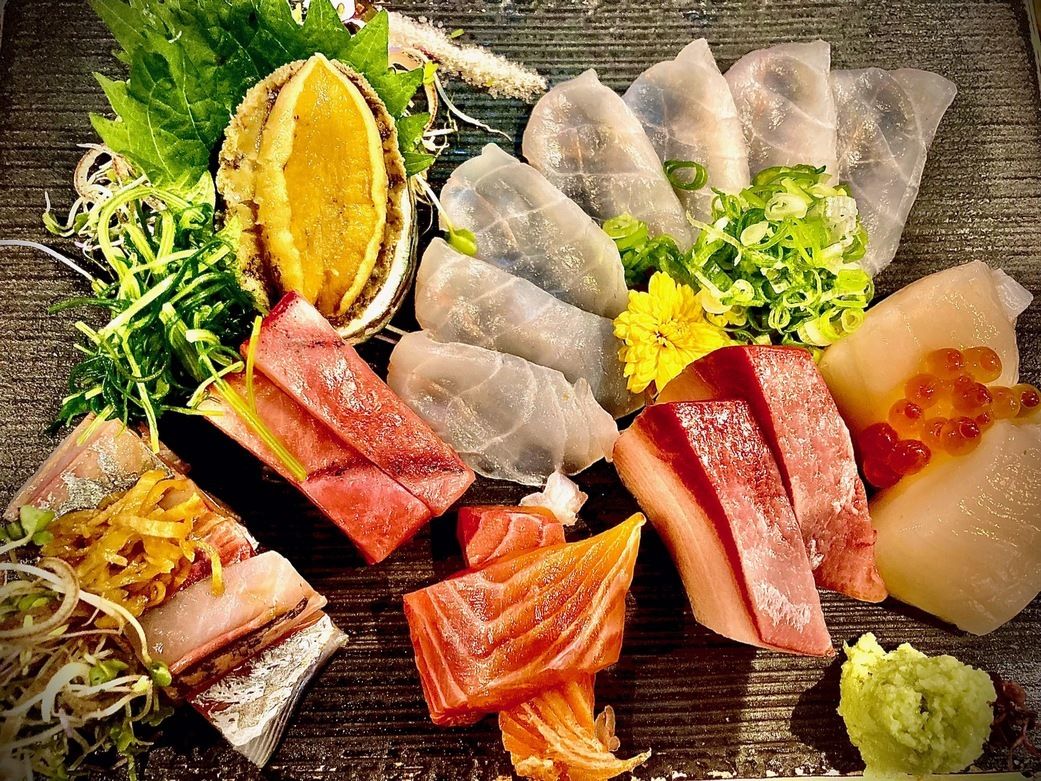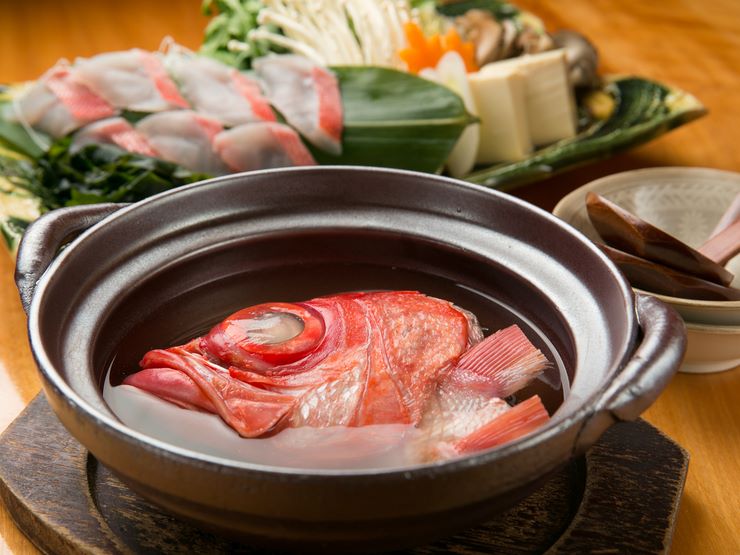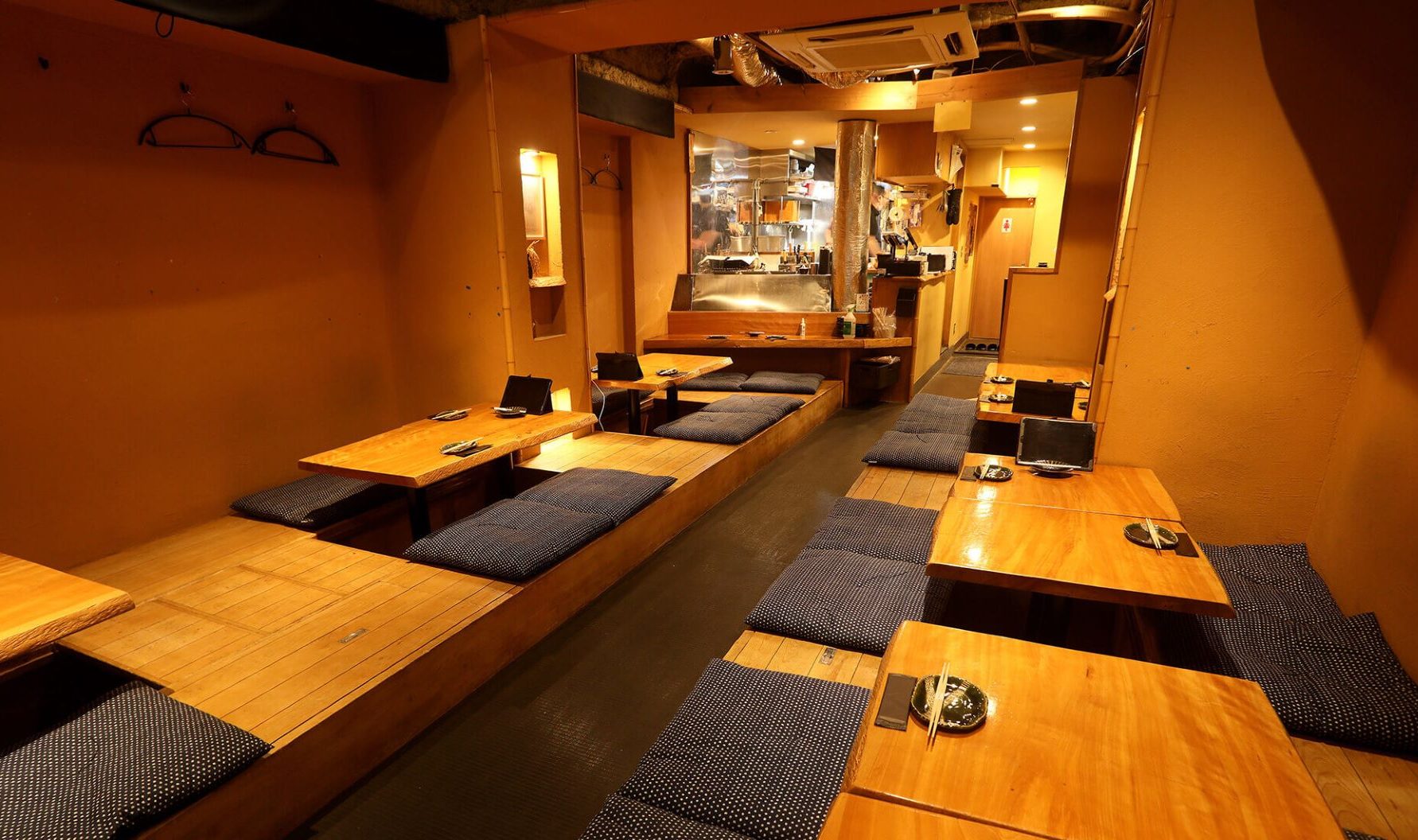Uokinme: A Shibuya Spot Specializing in One Incredible Fish
Uokinme Shibuya: Kinmedai Specialty Restaurant Guide

Tokyo is no stranger to fish. From midnight tuna auctions to conveyor belt sushi joints, the city practically runs on seafood. But there’s one fish that rarely gets a starring role outside of luxury kaiseki menus: kinmedai, or golden eye snapper. At Uokinme, located just a stone’s throw from Shibuya Station, that changes dramatically. This restaurant focuses on kinmedai, prepared in more ways than most diners even knew existed, with a focus that borders on obsession.
Tucked among the neon chaos of Dogenzaka, Uokinme makes a quiet argument for traditional technique and single-ingredient dedication. It’s a place where simplicity meets craftsmanship, where you can slow down and taste what happens when a fish gets the respect it deserves. Think thick slices charred over charcoal, simmered whole in sweet soy broth, or layered into fragrant claypot rice. If you think you know Japanese seafood, think again.
And if you need a general overview of Shibuya, check out our All-in-One Guide to Shibuya.
What is Uokinme?

Uokinme (魚きんめ) is a specialty restaurant in Shibuya that devotes itself almost entirely to one fish: kinmedai, also known as golden eye snapper or splendid alfonsino. This deep-sea fish is prized in Japanese cuisine for its rich, tender flesh and high fat content, especially during colder months. At Uokinme, kinmedai is the star of the menu. The restaurant explores the full potential of this fish through a seasonal, multi-course format as well as à la carte dishes, ranging from sashimi and grilled skewers to shabu-shabu hotpot and rice dishes cooked in traditional claypots.
What sets Uokinme apart, besides the ingredient focus, is the level of execution. The kitchen takes a serious, purist approach: thick cuts of kinmedai are seared over binchotan charcoal for optimal aroma and texture, and broths are adjusted according to the fat level of the fish that day. The result is a dining experience that feels both comforting and precise.
Ambience and Seating

The interior feels like a compact izakaya with a slightly more refined edge. Expect warm lighting, wooden paneling, and horigotatsu seating: low tables with recessed floors for leg comfort. Semi-private spaces are divided by noren-style curtains, giving some breathing room without walling you off entirely. The overall feel is relaxed and intimate, well-suited for slow meals and quiet conversation. It’s traditional, but not stiff.
The restaurant has 40 seats total, making it cozy but not cramped. Despite being so close to the chaos of Shibuya, Uokinme maintains a calm pace, and that applies to its service, too; efficient, polite, and never rushed.
Who Should Visit?
Uokinme is best suited for people who appreciate focus in their food. If you’re the kind of diner who gets excited about seasonal fish, rare sake, and thoughtful preparation, this place will hit the mark. It’s also a great pick for those who want to try kinmedai beyond just the occasional sushi slice. The menu walks you through its many expressions, making it ideal for culinary deep-divers.
It’s less about spectacle and more about substance. That means it may not be the best fit for large, rowdy groups or quick meals between sightseeing stops. Instead, think date nights, small gatherings, or solo dinners for those who want to slow down and savor. Japanese-speaking staff and a Japanese menu dominate here, so if you’re not fluent, it helps to book through a concierge or go with a friend who can translate.
Uokinme Hours & Best Time to Visit

Uokinme opens its doors every day from 5:00 PM to 11:30 PM, with last food orders taken at 10:30 PM and final drink orders at 11:00 PM. The restaurant doesn’t operate during lunch hours, so it’s strictly an evening destination. Think of it as a place for winding down after work or closing out a day of city exploration.
- Weekends and Friday nights tend to fill up quickly, especially with locals looking for a more refined izakaya-style dinner.
- If you prefer a quieter experience, weekdays (particularly Mondays through Wednesdays) offer a more relaxed pace, with staff able to spend more time explaining dishes and recommending sake pairings.
Reservations are strongly recommended, especially if you’re hoping to secure a semi-private seating area or plan to order a multi-course menu. Walk-ins may be possible, but there’s no guarantee of a spot, especially during peak hours between 6:30 PM and 8:30 PM.
If you’re aiming for the premium tasting course, it’s best to arrive early in the evening. The full dining experience can easily take two hours, and the kitchen’s pace rewards those who aren’t in a rush.
How to Get to Uokinme
Uokinme is located on the second floor of the HY Building at 2-6-14 Dogenzaka, Shibuya-ku, Tokyo. Despite its central location, the entrance is discreet, so it’s helpful to know exactly where you’re heading.
By Train
Shibuya Station is a major hub served by many lines:
- JR Lines: Yamanote, Saikyo, and Shonan-Shinjuku
- Tokyo Metro: Ginza, Hanzomon, and Fukutoshin Lines
- Keio Inokashira Line
- Tokyu Toyoko Line
- Den-en-toshi Line
From the station, it’s approximately a 3-minute walk to Uokinme.
Walking Directions
- From Shibuya Station, take the Hachiko Exit.
- Cross the famous Shibuya Scramble Crossing toward the 109 Building.
- Head up Dogenzaka Street, which runs alongside the 109 Building.
- Continue straight for about 200 meters.
- Look for the HY Building on your left, right after the Family Mart; Uokinme is on the 2nd floor.
The restaurant’s entrance is subtle, so keep an eye out for signage indicating “魚きんめ” (Uokinme) near the building’s entrance.
 Address Address |
〒150-0043 Tokyo, Shibuya, Dogenzaka, 2 Chome−6−14 HY Building 2F |
|---|---|
 Business Hours Business Hours |
Mon - Sat 17:00~23:30 / Sun & Holidays 16:00〜23:00 |
 Official Website Official Website |
https://www.kemurigroup.com/kinme |
Visitor Reviews of Uokinme

Uokinme enjoys a solid reputation among diners in Tokyo, especially those with a taste for quality seafood and a laid-back yet focused dining experience. On Google, the restaurant holds an average rating of 4.1 out of 5 based on over 200 reviews. Diners commonly highlight the freshness of the fish, the attentiveness of the staff, and the comfortable, intimate setting. Many visitors also point out the excellent value, especially when ordering the set courses with all-you-can-drink sake.
On Tabelog, Japan’s highly respected restaurant review platform, Uokinme holds a rating of 3.44 from 228 reviewers—slightly more conservative but still positive, reflecting the site’s generally stricter scoring trends. The reviews offer detailed praise for both food and service, especially from guests who visited in groups or celebrated special occasions.
One diner wrote:
“The sashimi was absolutely amazing. The staff and the atmosphere of the restaurant were warm and inviting, and there was a wide variety of delicious Japanese sake available, along with plenty of tasty snacks to accompany the drinks. Despite the all-you-can-drink option, the sake selection was extensive and the cost performance was outstanding!”
―from Tabelog
Another enthusiastic guest described their visit in detail:
“On February 28th, I visited for the first time with six customers. The sashimi platter featuring tuna was incredibly fresh and delicious! ❣️ The simmered Kinmedai (golden eye snapper) was served whole for each person, and it was absolutely delightful—pure happiness! ❣️ The Kinmedai Shabu-Shabu was equally outstanding and incredibly tasty! ❣️ I hope to visit again soon! 🙇♀️”
―from Tabelog
In general, reviewers agree that Uokinme succeeds at what it sets out to do: serve exceptional kinmedai-focused dishes in a comfortable, welcoming environment. While not flashy, the quality and care behind each dish leave a lasting impression on both locals and travelers alike.
Discovering Tokyo’s Foodie Culture
Tokyo’s food culture is also about how people discover it. The FoodTravelTokyo YouTube channel dives into that experience, following international visitors as they explore everything from skewers in back-alley stalls to multi-course meals in refined dining rooms. It’s an unfiltered look at how global travelers connect with the city through food.
If you’ve had a standout meal in Tokyo or can’t wait to experience it, there’s a quick form you can fill out. It’s a simple way to share your journey with fellow eaters navigating the city’s food scene one dish at a time.
For more information about the local restaurant scene, check these articles too!
Written by
Established in 2016, Japan Web Magazine is a long-running online media platform dedicated to sharing the beauty and uniqueness of Japan with a global audience. Our team is made up of passionate Japan lovers—both Japanese and international writers—who bring a diverse and authentic perspective to every article. We cover everything from must-visit travel destinations across Japan, to local food recommendations, shopping guides, and practical travel tips. In addition to tourism content, we also delve into Japan’s rich cultural tapestry, introducing readers to traditional customs, festivals, and the latest trends in modern Japanese pop culture, including anime and entertainment. Driven by a genuine love for Japan, our mission is to connect readers around the world with the wonders of this incredible country.







